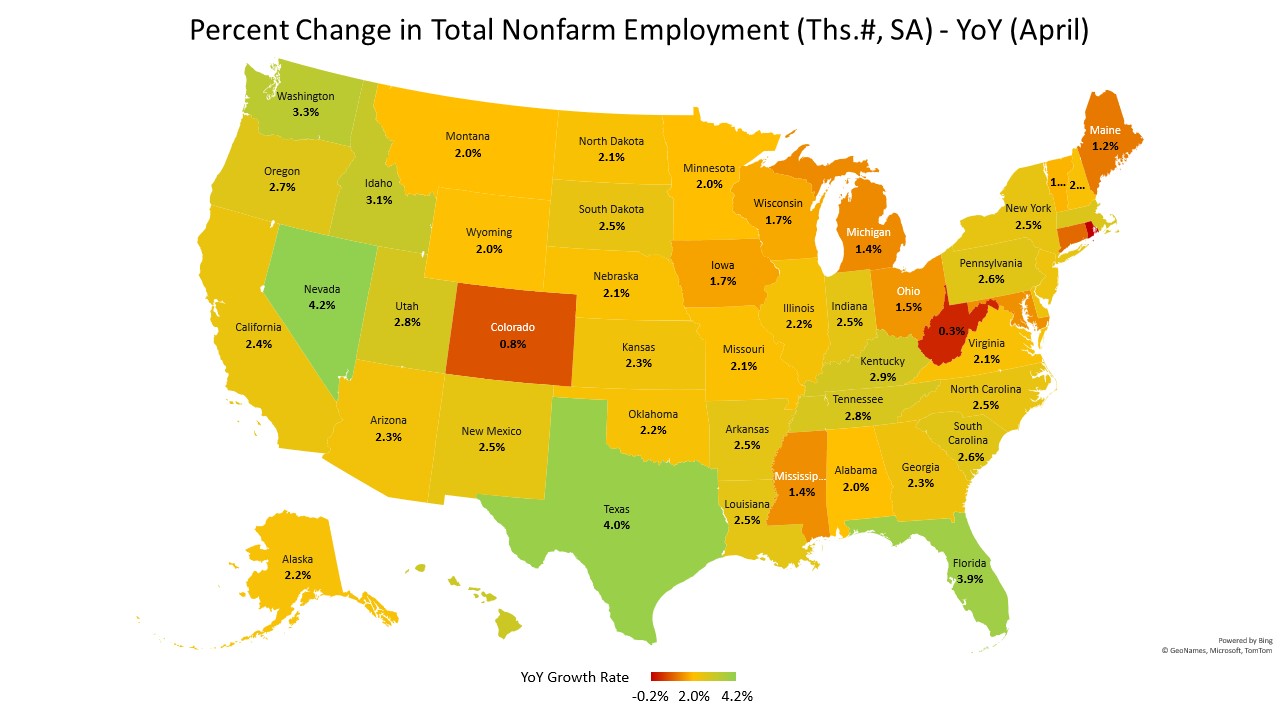Nonfarm payroll employment increased in 36 states in April compared to the previous month, while 14 states and the District of Columbia lost jobs. According to the Bureau of Labor Statistics, nationwide total nonfarm payroll employment increased by 253,000 in April, following a gain of 165,000 jobs in March.
On a month-over-month basis, employment data was strong in California, which added 67,000 jobs, followed by Texas (+33,300), and Florida (+21,200). Fourteen states and the District of Columbia lost a total of 39,000 jobs. In percentage terms, employment in Indiana increased by 0.5% while Rhode Island reported a 0.8% decline between March and April.
Year-over-year ending in April, 4.0 million jobs have been added, marking a more than full recovery of the labor market from the COVID-19 pandemic induced recession. Except for Rhode Island, all the other states and District of Columbia added jobs compared to a year ago. The range of job gains spanned 534,600 jobs in Texas to 1,800 jobs added in West Virginia. In percentage terms, Nevada reported the highest increase by 4.2%, while Rhode Island decreased by 0.2% compared to a year ago.

Across the 48 states which reported construction sector jobs data—which includes both residential as well as non-residential construction— 24 states reported an increase in April compared to March, while 24 states lost construction sector jobs. Washington added 4,300 construction jobs, while Texas lost 8,500 jobs. Overall, the construction industry added a net 15,000 jobs in April compared to the previous month. In percentage terms, South Dakota increased by 2.7% while Alaska reported a decline of 4.2% between March and April.
Year-over-year, construction sector jobs in the U.S. increased by 205,000, which is a 2.7% increase compared to the April 2022 level. Texas added 28,000 jobs, which was the largest gain of any state, while California lost 5,100 construction sector jobs. In percentage terms, Arkansas had the highest annual growth rate in the construction sector by 9.8%. Over this period, West Virginia reported a decline of 3.7%.

Related


